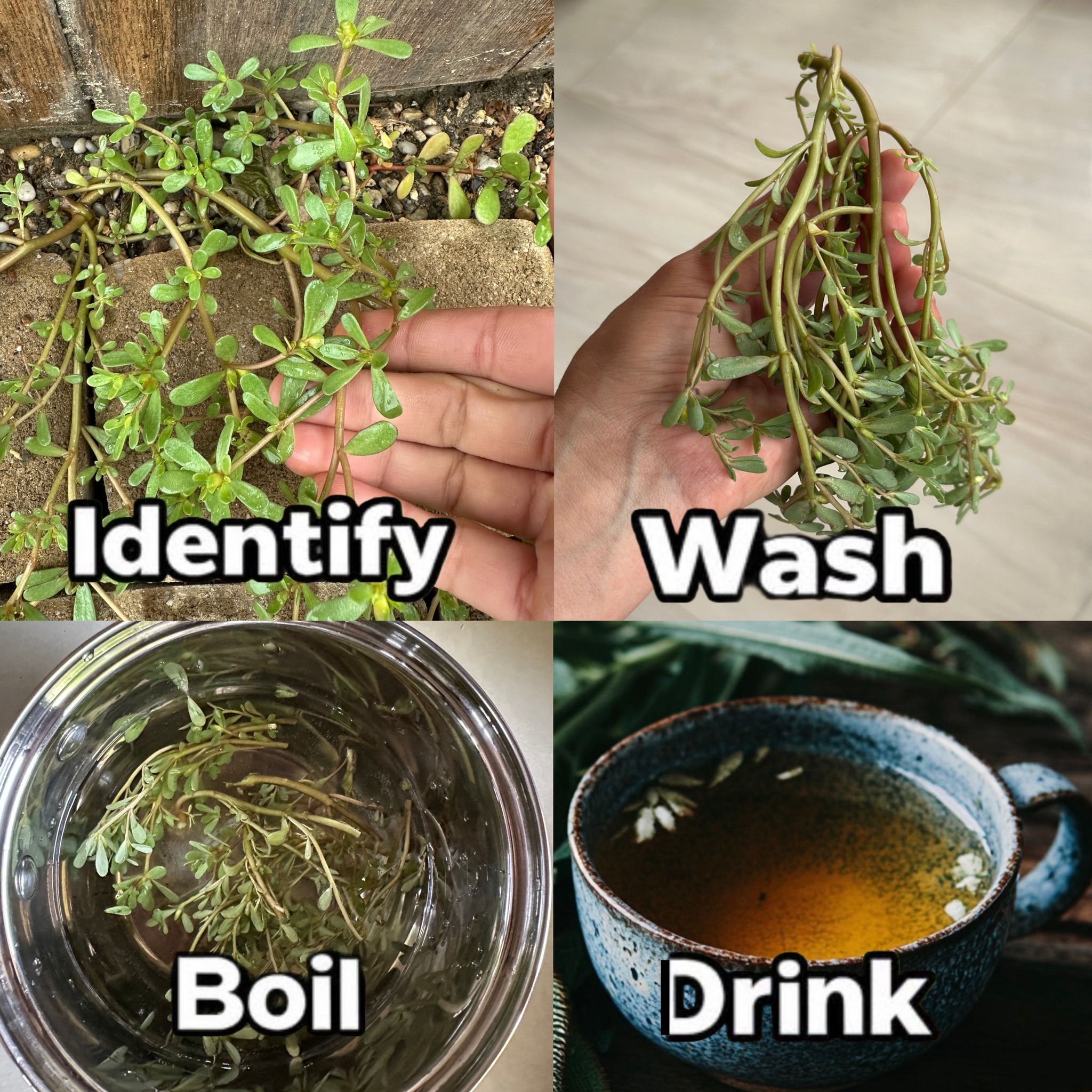Purslane has a mild, slightly tangy flavor that is reminiscent of spinach or watercress. It can be enjoyed raw or cooked and is a popular ingredient in salads, soups, stir-fries, and stews. Some common culinary uses for purslane include:
Purslane: A Nutrient-Rich Plant with Numerous Benefits
Purslane Green Smoothie
Ingredients:
1/2 cup fresh purslane leaves and stems
1 ripe banana
1/2 cup spinach (optional for extra greens)
1/2 cup pineapple chunks (fresh or frozen)
1 cup almond milk (or any milk of your choice)
1 tsp honey or maple syrup (optional, for added sweetness)
Instructions:
Add all ingredients to a blender.
Blend until smooth and creamy.
Pour into a glass and enjoy immediately!
Purslane, scientifically known as Portulaca oleracea, is a versatile and nutrient-rich plant that offers a multitude of benefits for health and culinary purposes. Despite being considered a weed by many, purslane has been celebrated in various cultures for centuries for its medicinal properties and culinary uses. This article aims to explore the characteristics of purslane, its health benefits, culinary uses, and how to identify and cultivate it in your garden.
Identification and Characteristics
Purslane is a low-growing succulent plant with smooth, reddish stems and thick, fleshy leaves that are arranged alternately along the stem. Its leaves are paddle-shaped and vary in color from green to reddish-green. Purslane produces small, yellow flowers that bloom during the summer months. These flowers typically have five petals and can be found at the tips of the stems.
One of the distinguishing features of purslane is its growth habit. It tends to spread horizontally along the ground, forming dense mats or clusters. This growth pattern allows purslane to thrive in a variety of environments, including gardens, fields, and even cracks in pavement.
Culinary Uses
Innovative Uses:
Pesto:
Replace some or all of the basil in traditional pesto recipes with purslane for a nutrient-dense version of this beloved sauce.
Pickles:
Purslane’s succulent stems and leaves can be pickled, creating a tangy and healthy condiment that can be added to a variety of dishes.
Tips for Incorporating Purslane:
Start Small:
If you’re new to purslane, begin by introducing it into dishes where greens are typically used. Its mild, slightly peppery flavor makes it a seamless addition.
Mix It Up:
Combine purslane with other greens in dishes to get a variety of textures and flavors, as well as a broader range of nutrients.
Use It Topically:
For skin care, consider creating a purslane extract or infusion to use as a facial rinse or adding it to DIY face masks for its antioxidant properties.
How to Preserve Purslane by Freezing
Freezing purslane is an excellent way to preserve its nutritional benefits and enjoy it year-round. Here’s how to do it:
Materials Needed:
CONTINUE READING ON THE NEXT PAGE 🥰💕

